Designed by Gustave Albert (G. Albert) Lansburgh and built for H. Levi & Co. in 1912, the five-story brick warehouse building on the southeast corner of Kansas and 15th Street was constructed with trapezoidal floor plans to fit its triangular parcel that abuts a former Western Pacific Railroad right of way that still bisects the Showplace Square block.
Purchased by Henri and Tomoye Takahashi in 1965 to house the Takahashi Trading Company, which was displaced from Japantown by the “redevelopment” of the neighborhood in 1959, a two-story concrete warehouse and office building was added to the property along Rhode Island Street in 1968.
The Takahashi’s added a three-story brick warehouse and office building to the complex in 1976, encasing the original building’s loading dock along Rhode Island and 15th.
The Takahashi family sold the now vacant and roughly 90,000-square-foot complex at 200 Rhode Island, which is zoned for Production, Distribution and Repair (PDR) uses, which prohibits general office use or development, to Four Corners Properties and Westbrook Partners for $37 million in early 2019. And in a move which might seem counterintuitive to some, the new owners are seeking to have the property designated a historic landmark.
But as we first outlined back in 2013, and has since been employed, while San Francisco’s Showplace Square/Potrero Hill Area Plan actively seeks to preserve the supply of PDR space within the district and city, there is an exception/loophole that allows for the conversion of landmarked buildings.
And with that in mind, the City has just received Four Corners formal application to convert the fourth and fifth floors of the historic five-story Takahashi building into office space, and redevelop the two and three story additions, primarily as office space as well, once the landmark designation is secured.
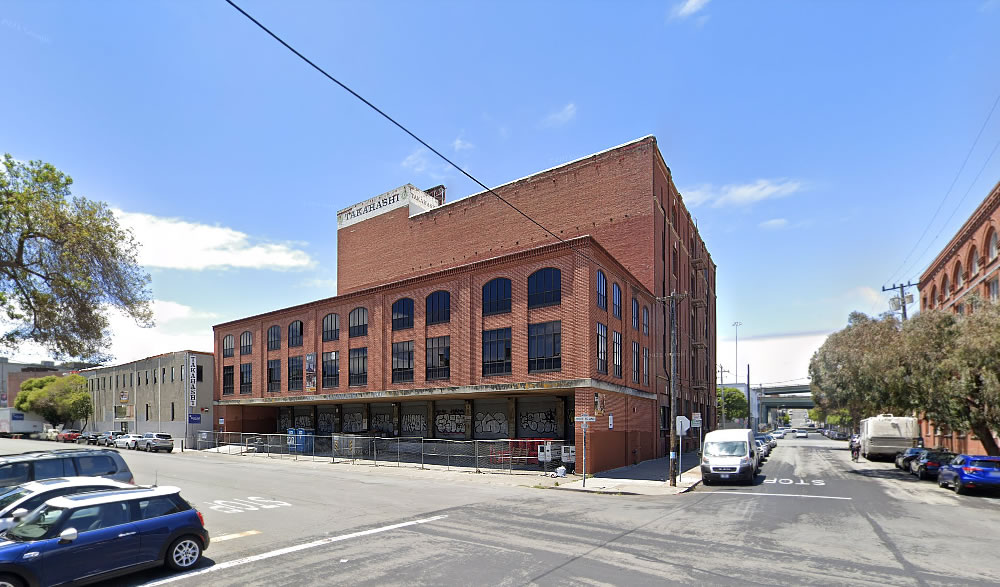
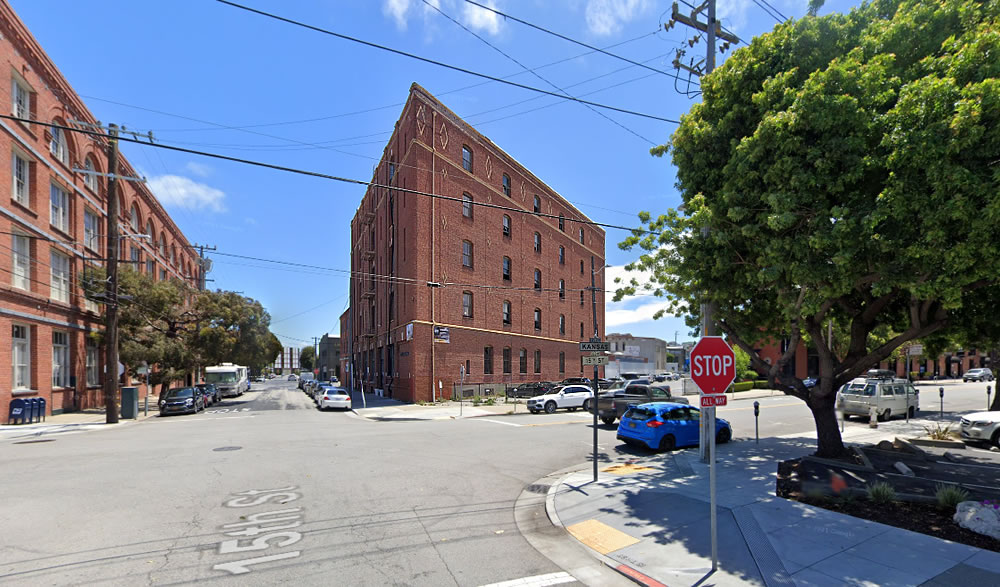
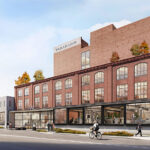
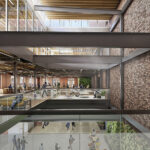
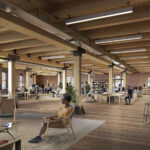
I’m generally in the build camp but this time I have to say it, more office?!?
It will take years going through Planning, then approvals, then to a final permit issuance, then there is the construction time. Everyone on this site acts as if projects in SF only take a a year from proposal to finished construction. Assuming this even gets approved, it would likely be 4-5 years before a finished project came to market, and it may take longer if there is opposition. So, the developer is playing the long game.
You forgot about the reaching out to neighborhood grounds, the appeals, etc. etc.
What has and hasn’t happened all along Mission Creek and into the design district is a textbook lesson San Francisco planning and government lack of creativity and vision. A lot of the buildings down there are pretty amazing. They were built when ships would sail up alongside very long piers that literally had railroad tracks out over the water, loading and unloading and feeding cargo along those same rail tracks right up to these amazing warehouses. There are vestiges of those tracks still alongside Pier 24 for instance.
Many of the buildings are huge timber fortresses on the inside, composed of *entire* massive old growth redwood trunks to support the weight.
In more creative cities these kinds of abandoned tracks were converted into greenways with landscaping and bike and walk trails because they cut at a “shortest route” angle through cities. Perfect for bikeways. In places like Chicago they have literally transformed whole neighborhoods. Not here though. Anything but. The neighborhood’s “showplace square” legacy made it ripe for really creative iterative mixed use development but to go down there today is a mixed bag at best. Some really nice work and a lot of bland ubiquitous stuff too.
Wow fascinating – I have noticed that the area is designed for wealthy folks to drive right up and shop at the interior showrooms; very bland streetscape experience and obvious absence of housing. So frustrating when decades of change have been stymied by poor planning and restrictions on growth.
OK. But on the other hand, SF has done just that. Have you not been to the waterfront lately, Crane Cove, etc? What so many cities wouldn’t give to have such spaces …
It’s because people who never want anything built or to change always sue and block anything creative or fun in San Francisco.
I think everything “creative or fun” got evicted from San Francisco a while ago.
Would be even better if they converted the 5-story building into high-end loft condos like 355 Bryant, but I love these buildings and plans.
Yeah we certainly need more high end condos in this city.
What the City needs is more affordable housing, not more condos for rich people. San Francisco already has too many of those.
Everyone says that until they want to build it on your block.
Know anyone who lives on this block, zac?
Carolyn, I agree with your sentiment, but eliminating any of the last few remaining PDR-zoned parcels that could provide good jobs for people without graduate degrees in symbol manipulation will only exacerbate income inequality. SF needs affordable housing and good jobs for working class people (i.e. jobs that pay better than uber or being a security guard in a high-end loft condo).
But Michael wins the prize here: Say yes to more empty luxury lofts for speculators, foreign money launderers, and short-term rental slackers!
I walked around in the Takahashi bldg when they had their closing sale. It would make for great workspaces for artists, craftspeople, contractors, and the like. The city should consider partnering with SFMADE and local arts organizations to try to preserve these types of classic industrial buildings while converting them to long-term, sustainable uses the city actually needs.
Nope, not at all.
I was just being mean. Empty noise.
Google, Deloitte, IBM doesn’t require a college degree for over 50% of its jobs, and many small and medium companies don’t require college degrees, especially in the tech sector—they just care that you have the skills.
There is not a lack of PDR jobs because there isn’t enough PDR space. Instead the reason for fewer PDR jobs is that SF is expensive, not just for commercial rents, but also for salaries and housing. SF also has a burdensome regulatory environment, not just for big business, but also for small and medium businesses that find it very difficult to comply with all the rules and regulations. So, many employers, across ALL industries, not just “PDR,” would rather locate in cheaper areas, with less government regulation and red tape. But, especially for PDR or any employers without especially deep pockets and some very compelling reason to locate in the city, it generally is a better business decision to locate outside the city.
Ah, the good ol’ regulatory burden canard and tautological boilerplate. Ayn Rand to the white people’s courtesy telephone, please!
Ah, [two beers], leave it up to you to bring up that dead old kook. Nowhere did I argue against all regulations. There are many perfectly livable and liberal cities that manage to function with less regulatory burden, and more importantly, a much more affordable cost of living than SF. How old are you, Comrade? Any Rand??? I swear you just be attempting political satire. It’s so bad, it’s hilarious. Thanks for the chuckles.
Except; more than 80% of the housing stock in the city is rent-controlled and already actually way, way under market rate. The real issue has more to do with movement and newly available, BMR housing—which I shouldn’t have to explain is less and less viable via cost of construction, etc.
BMR is “less and less viable” partly because building luxury condos/towers/offices, et al, raises land value. Housing unaffordability is not an accident or necessary sacrifice to some notion of “progress.” Housing is unaffordable for most people largely due to the city’s policy to upzone and upscale development of every square inch of available land. Land value is based on the potential development of that land. It doesn’t even matter if no one will ever lease or buy a unit for the project; simply creating the expectation that a parcel can be a luxury condo skytower drives land costs higher and makes affordable housing anywhere nearby impossible without public funding.
There’s a lot the city can’t do anything about to control housing costs, such as rock bottom interest rates and quantitatively-eased vulture crapitalists throwing essentially free money at barely post-pubescent boba-gobbling style sheet jockeys, but zoning policy is one area where the city could make an impact on housing costs, if that were one of its priorities, which it apparently is not.
No, it’s because construction costs and workers’ comp costs are largely the same whether building luxury or BMR.
And to be fair, it’s not just “rich people” in expensive condos, they’re also families, college students and people with jobs equally upset by the cost of housing.
No more offices, for heavens sake. Preserve what little PDR this city has.
Plus, we are never going back to a 5 day in the office scenario.
Office leases are being terminated/downsized, not picked up.
Long game or not, everything’s changed
To your point this quote about the future need for office space in SF from the SF Business Times:
“However, with San Francisco at the forefront of a historic wave of office subleases space hitting the market across the nation and local tech jobs increasingly advertised with remote work as a benefit, there is reason for concern. San Francisco Tech giants Eventbrite and Yelp have given up large swaths of office space in the city’s downtown and opted instead to move their primary offices into much smaller and likely cheaper subleases, and they unlikely to be the last companies to do so in the wake of the pandemic.”
Ah….but “artists” and “craftspeople” and “industry” can take up the slack. As if an auto body shop or a metal fabricator would choose to locate in (still) expensive SF rather than, say, Hayward, or Fairfield. Or the Yellow River Delta, for that matter.
two beers is so fixated on the concept of San Francisco as a unique island, by itself, with eight other Bay Area counties 1000 miles away, not a bridge or tunnel distant.